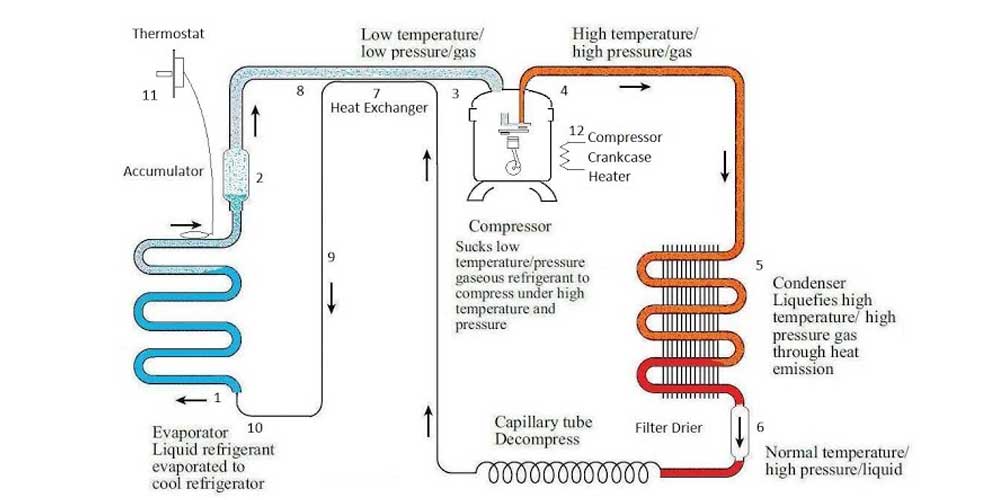In most homes, people use electric refrigerators, as they are most cost effective, more energy efficient, and made for easy long term use. But when you are living in an RV or you are planning on going on an extended camping trip, electricity may not be available.
That is why there are also other types of refrigerators available – most notably, gas powered refrigerators. These (generally propane or butane) gas powered refrigerators work adequately in situations where electricity is not available.
How Do They Work?
Gas powered refrigerators have many of the some basic components as electric refrigerators. The basic components of the gas powered fridge are a :
- Generator
- Separator
- Condenser
- Evaporator
- Absorber
All of these components run together using the gas as both the fuel and the coolant in order to get the refrigerator to work even when there is no electricity available. The entire process is fairly effective, and though it is less energy efficient than the standard refrigerator, it does effectively get the job done.
Shop around, and take a look at some of my other articles on this site about good outdoor refrigerators:
See Also:
- Choosing an Energy Efficient Refrigerator
- 10 best refrigerators under $500
- Best Mini Outdoor Fridge
- What Extra Features Should I Look For In A Refrigerator?
- How Does A Refrigerator Work?
- What types of technical problems are common with refrigerators?
- Outdoor Refrigerator Accessories – Covers, Casters, and Shelves
- 12v vs 110v Outdoor Refrigerators: Which One is Right for You?
- Brand Comparison: Engel vs Dometic vs Norcold vs Whynter – Outdoor Kitchen Picks
- check out Answering Your Common Outdoor Refrigerator Questions [FAQ].
Gas Powered Refrigerator Process

1.Generator
Gas is burned for the generator. The gas helps create the energy of the process, as well as raises the temperature of this combination of ammonia and water, making it boil.
2.Separator
Once the ammonia is boiling, the combination travels to a separator that moves the ammonia and the water separately through the rest of the system.
3.Condenser
Here is where the process is similar to many of the traditional electric refrigerators. The ammonia gas flows through a condenser, which uses a pressure system to move it through coils. These coils keep the ammonia warm, but turn it into a liquid.
4.Evaporator
The liquid ammonia than collides with another solution of hydrogen gas. When it evaporates, colder temperatures are created that help it cool down the refrigerator.
5.Absorber
Once completed, the water combines back with the hydrogen and ammonia mixture, and the hydrogen then leaves and collects elsewhere, while the remaining solution starts the process all over again.
The entire procedure for creating refrigeration from gas is mildly complicated overall, but still extremely effective for creating refrigeration in areas where electricity is not available. Though it may not be the most ideal system and certainly is not meant to be used for extremely long periods of time unless one has little access to electricity.
How Long Does a Single Gas Tank Generally Last in a Refrigerator?
How long they last often depends on the type of gas they use. For example, the average propane refrigerator uses approximately ¾ of a tank each day. Models vary considerably though, with the old ones being much less efficient.
It is best to stock up on propane tanks (as safely as you can do so) before you leave for your trip, because if a tank runs out it does not take long for all of the food inside to spoil, and most of the food you had for your trip could be gone. Otherwise, they are still generally effective for long camping trips, RV trailers, and whenever else you need them.
Also check out the best outdoor kitchen refrigerators
Put your questions or suggestions in the comments below, so we can all benefit from each other’s knowledge.
Happy Outdoor Living! Thanks for reading.







